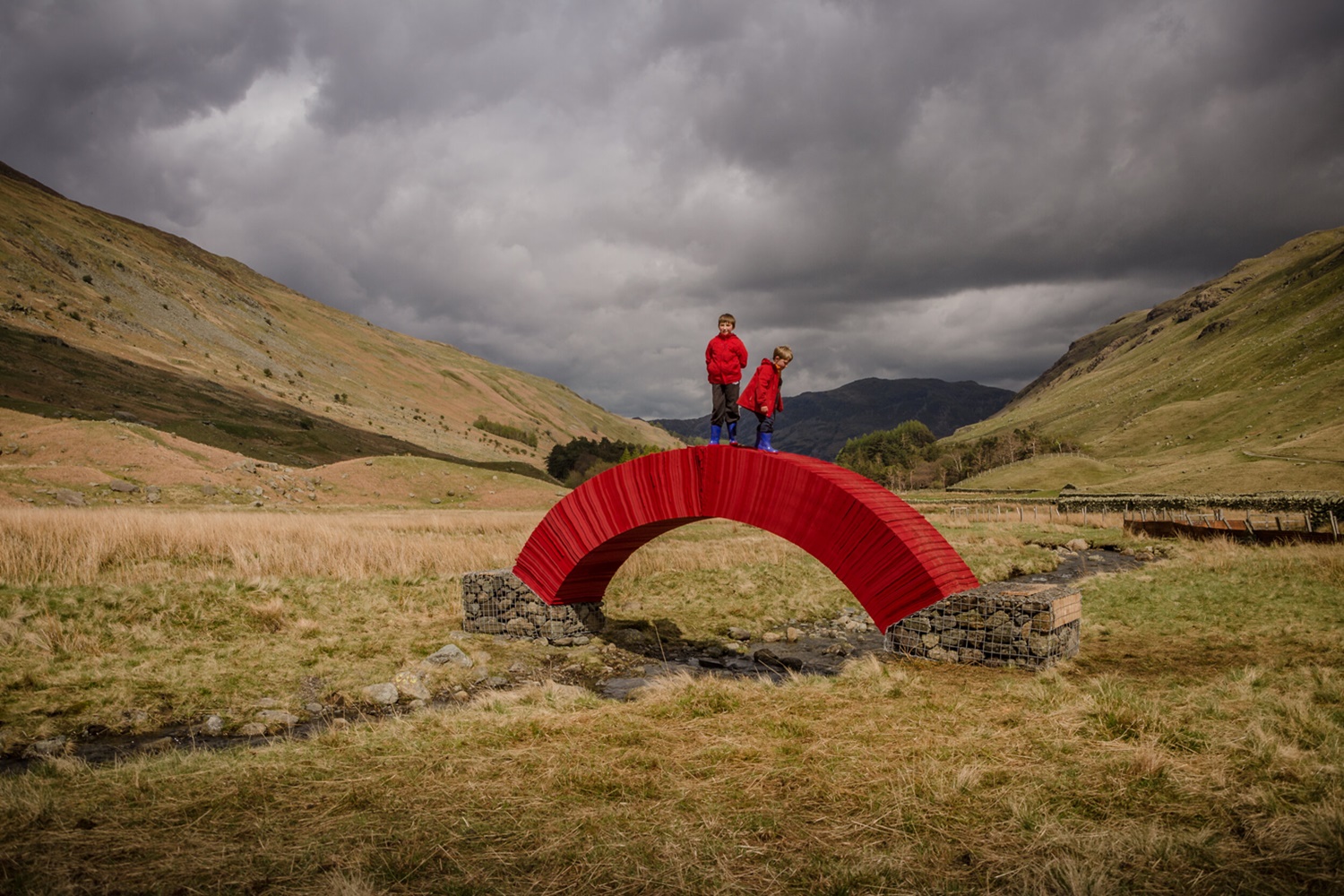P3 3-4/2022 en
Arena
Paperthings
PaperBridge by Steve Messam is a temporary artwork made for and about the landscape of the Lake District. On an aesthetic level the piece acts as a focal point within a vast open landscape. The bright red colour drawing the eye and interfering with the natural environment, while at the same time creating compositional balance with the green backdrop and flow of water. The Lake District has a long and important history in the perception of landscape and aesthetics. Paperbridge is seen as part of its continuing and evolving legacy.
The piece is site-specific - a piece built for that exact spot. For its balance of mountain and flowing beck. Two footpaths travel up either side of the valley at that point. A footbridge between the two has an element of purpose. The paths around the valley provide a defined number of sight-lines of the bridge - all of which have been considered to ensure visitors not only get to understand the piece within its landscape context but also to take away strong photographic images.
PaperBridge is made from paper specially made by James Cropper at the Burneside Mill. As one of the leading manufacturers in coloured paper the piece also celebrates the high-class manufacturing that takes place in Cumbria. James Cropper is, according to Steve Messam, the “only paper mill in the world capable of producing paper of such vibrancy and colour to the strict environmental standards this piece requires”. In short, PaperBridge could not happen anywhere else other than Cumbria.
Paper is a simple material made from wood pulp and water. The materials have a resonance with the natural environment. All the paper used in PaperBridge will be recovered and returned to Burneside Mill for recycling - re-pulping and made into new paper. This transparent cycle is part of the overall environmental narrative of the piece.
However, paper and card architecture is not new. Tokyo architect Siguru Ban has built a number of temporary and permanent structures from cardboard - including a bridge in France. But unlike Ban’s construction, PaperBridge uses no glue, bolts or other fixings. Instead it relies on vernacular architectural principles as used in drystone walls and the original pack-horse bridges that dot the Lake District. In this respect PaperBridge is unique. Something that has never been attempted anywhere before.
As a truly unique construction there are no previous incarnations to learn from or indeed any known engineering calculations. PaperBridge has taken three years on and off in its development. A number of working models up to 1:4 scale have been built to test design elements including the impact of rain on structural integrity.








